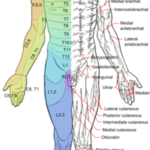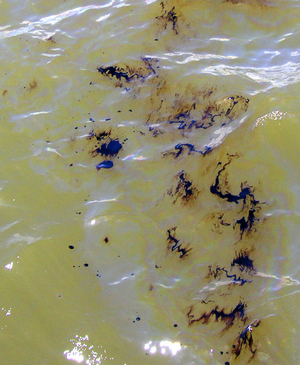The brain is a complex organ that is not fully utilized by the human. There are five major divisions of the brain, the myelencephalon, metencephalon, diencephalon, and the telencephalon. Each division has different processes that contribute to thoughts and actions. Each of these five divisions will be discussed in further detail.
Myelencephalon
Myelencephalon, which is referred to as the medulla, is most made up of tracts that carry signals between the brain and the body. This part of the brain is detrimental; any damage to this part of the brain could be life-threatening. The reticular formation has a psychological perspective that is comprised of a complex network of small nuclei that occupies the central core of the stem of the brain. The reticular formation is also referred to as the reticular activating system because it plays a role in the arousal stage. Arousal is not the only function that the reticular formation is involved in; sleep, attention, mobility, and the maintenance of muscle, as well as other cardiac, circulatory, respiratory reflexes.
Metencephalon
The metencephalon is much like the myelencephalon; this is where the ascending and descending tracts are housed. This housing creates a bulge that is called pons, located on the brains stem’s ventral surface. The pons make up a major division of this part of the brain. The cerebellum is another large division that is located on the brain stem’s dorsal surface. Any damage to this part of the brain can eliminate the ability to control one’s movements and the adaptation of the changing conditions.
Mesencephalon
The mesencephalon has two divisions, the tectum and the tegmentum. The inferior colliculi holds the auditory function and the superior colliculi hold the visual function. Within the tegmentum are three colorful structures that peak the interest of biopsychologists. These structures house the periaqueductal gray, substantia nigra, and the red nucleus. The periaqueductal gray, which is gray matter, is located around the cerebral aqueduct; this ducts connects the third and fourth ventricles. This part of the brain is beneficial because it has a special role in pain reducing drugs. Both the substantia nigra and the red nucleus have the same function within the sensorimotor system.
Diencephalon
Diencephalon has two different structures which are the thalamus and the hypothalamus. The thalamus is a two-lobed structure that makes up the top of the brain stem. This part of the brain also houses many pairs of nuclei that all vary. Some of these nuclei are sensory relay nuclei that receive signals from the sensory receptors, which they then process and transmit them to their proper places of the sensory cortex. Sensory relay nuclei are much like postmen and women, they receive the mail (the signals), they process the pieces of mail, and then they send the mail on its way to its proper place (much like how this nuclei sends their processes to their specific places). Next, we have the lateral geniculate nuclei which is the visual sensory nuclei.
The other structure of the brain is the hypothalamus which plays a big part in regulating the release of hormones from the pituitary gland. As a part of the hypothalamus, we have the optic chiasm which is the point in which the optic nerves from each of the eyes come together. The axons make an x shape because they cross over the optic nerve. We then have the mammillary bodies that are a pair of spherical nuclei which are located behind the pituitary.
Telencephalon
This part of the brain is the largest of all of the divisions and mediates some of the most complex functions. The telencephalon is what initiates the voluntary movements, interprets sensory output, and again, mediates the complex cognitive processes that include learning, speaking, and problem solving.
As part of the telencephalon, we have the cerebral cortex. Within the brain, the telencephalon is relative in size to the size of the mammal of which it is a part of. Fissures, which are large furrows, are located within the convoluted cortex. The small furrows are called sulci, the ridges between this part of the brain and the fissures are called gyri.
The brain is divided into two hemispheres by the longitudinal fissure. There are two main landmarks on the lateral surface, the central fissure and the lateral fissure. This divides each hemisphere into four different lobes, the frontal, parietal, temporal, and the occipital lobe. The precentral gyri contains the motor cortex. The postcentral gyri contains the somasensory cortex and the superior temoral gyri contains the auditory cortex.
In conclusion, we have learned that there are five major divisions of the brain. Each division of the brain contains it own division of each part as well. In the myelencephalon (otherwise known as the medulla) we learned that this is where the reticular formation is. In the metencephalon we learned that it was divided into three main parts – the reticular formation, pons, and the cerebellum. Mesencephalon is divided into the tectum – which is further divided into the superior and inferior collicull. As the other division, the tegmentum, we see that it is divided into the reticular formation, cerebral aqueduct, periaqueductal gray, the substantia nigra, and the red nucleus. Diencephalon is divided into four parts – the thalamus, hypothalamus, optic chiasm, and the pituitary gland. The thalamus is divided into the massa intermedia and the lateral geiculate nuclei. The hypothalamus if divided into the mammillary bodies. Lastly, we have the telencephalon, which is divided into the major gyri (further divided into the postcentral, superior temporal, and cingulated gyri), the four lobes (the frontal, temporal, parietal, and occipital lobes), the limbic system (the amygdale, hippocampus, fornix, cingulated cortex, septum, and mammillary bodies), the basal ganglia (the amygdale, caudare, putamen, globus pallidus) and the cerebral commussures (corpus callosum).



